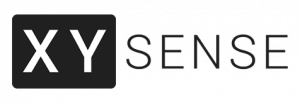Sensors reveal The Office is Back: Highest occupancy since onset of COVID-19
NEW YORK, NEW YORK, UNITED STATES, June 5, 2024 /EINPresswire.com/ -- Working from the office is back. Global workplace utilization grew to its highest level in four years, jumping by 36% over the Q4 2023 level, according to the latest report from XY Sense, the actionable intelligence platform for real estate teams.
The surprising surge in office occupancy came after three quarters of flat patterns around the globe. Utilization increased throughout the quarter, rising from 28% in January to 44% in March ‚ÄĒ the highest level recorded since the onset of the COVID-19 pandemic. Workplace demand rose at least 25% in all tracked regions, and utilization in North America, which had been running far below global averages, climbed 27%.
A quarterly report, the XY Sense Workplace Utilization Index analyzes data from 41,000+ workspaces in the US, UK, and Asia-Pacific. XY Sense's rapidly expanding network of workplace sensors (+17% in Q1) collect the data. The sensors protect privacy while providing real-time insights on office usage patterns, including how employees use desks and meeting rooms. The highly accurate sensors update every two seconds.
A Perfect Storm Drives Workers In
Several forces appear to have converged to create a ‚Äúperfect storm,‚ÄĚ encouraging workers to spend more time in the office:
Economic uncertainty combined with rounds of highly publicized layoffs in Western markets have likely softened worker resistance to spending more time in the office. The pendulum has swung back from the strong employee markets of 2021 and 2022 with full-time remote job listings declining substantially in the past year, according to LinkedIn.
Recent industry studies show worker attitudes toward in-office time are changing: Multiple recent studies and surveys have shown that despite a strong preference for flexibility, workers believe in-office time is critical for developing social connections, gaining expertise and training, improving team collaboration, and progressing in their careers.
Company incentives to bring people back into the office more often are working. In the second half of 2023, many companies began offering more incentives to increase the appeal of coming to the office ‚ÄĒ in the form of happy hours, catered meals, childcare benefits, and even raises.
Additionally, growing management acceptance of hybrid work schedules and work environment improvements likely contributed to the gain.
‚ÄúOffices haven‚Äôt been this busy in years,‚ÄĚ said Shivaun Ryan, Head of Customer Success at XY Sense. ‚ÄúThis is a welcome change for corporate real estate and HR teams who have been struggling to balance the operational, carbon, and workplace culture costs of largely empty offices in the wake of the pandemic. The suddenness of these gains also underscores the need for accurate workplace analytics, so companies can measure and respond to changing employee needs and preferences.‚ÄĚ
Average utilization increased by more than 40% for every day of the week. During the Tuesday/Wednesday/Thursday ‚ÄúTWT‚ÄĚ hybrid workweek, utilization averaged 41% ‚Äď a point approaching 75% of pre-pandemic levels. On quieter Mondays and Fridays, when many hybrid workers choose to work from home, utilization rose to 30% and 23%, respectively.
Resource Utilization Changes
Collaboration spaces showed higher utilization than individual workpoints, continuing a yearlong pattern. Utilization of collaboration spaces increased eight points, to 39%. The most popular collaboration space type was the enclosed meeting room, while demand for open (unwalled) collaboration space was lowest at 22%. Average hours of usage were 43% higher for enclosed meeting rooms than open spaces, as workers opted for venues with more privacy and available tech resources like videoconferencing, projection, and whiteboards.
Demand for individual workpoints (aka desks) rose nine points to 35%. Despite this strong gain, almost half of desks are used for less than one hour per day, and nearly a third (31%) are never used. This continues a pattern XY Sense has seen since its first WUI report, indicating that offices have far more desks than necessary. In addition to being a waste of equipment and costly office space, large numbers of unoccupied desks detract from the kind of ‚Äúhive‚ÄĚ that conduces to worker satisfaction and productivity.
‚ÄúThe dramatic change in utilization last quarter shows how much and how quickly workplace needs change in the post-pandemic world,‚ÄĚ said Alex Birch, XY Sense Co Founder and CEO. ‚Äú2024 represents an amazing opportunity for companies to transform workplaces to better serve both employees and their business bottom lines. Business leaders must have access to reliable and accurate data on how their office environments should evolve. Global trends insights are invaluable for benchmarking, but every workplace is unique. Collecting your own data is the key to success.‚ÄĚ
Many other insights are available in the report, which is available now at no cost.
About XY Sense
XY Sense is the actionable occupancy intelligence platform for corporate real estate teams. Our privacy-first, AI-powered Sensors and Workplace Analytics Platform deliver the richest real-time insights and integration capabilities for workplace teams working to control real estate costs, boost space productivity, and orchestrate office environments that people love. With superior coverage (95 sqm/1,022 sqft/20 desks), accuracy (<1ft), actionable out-of-the-box analytics, and more sustainable installation capabilities (~80% less cabling required,) XY Sense has become the occupancy sensor platform of choice for companies looking to drive ROI from workplace real estate. XY Sense has offices in Australia and the United States and serves customers in over 17 countries.
Diane Anderson
Word Play Agency
+1 415-254-9086
email us here



